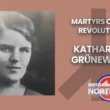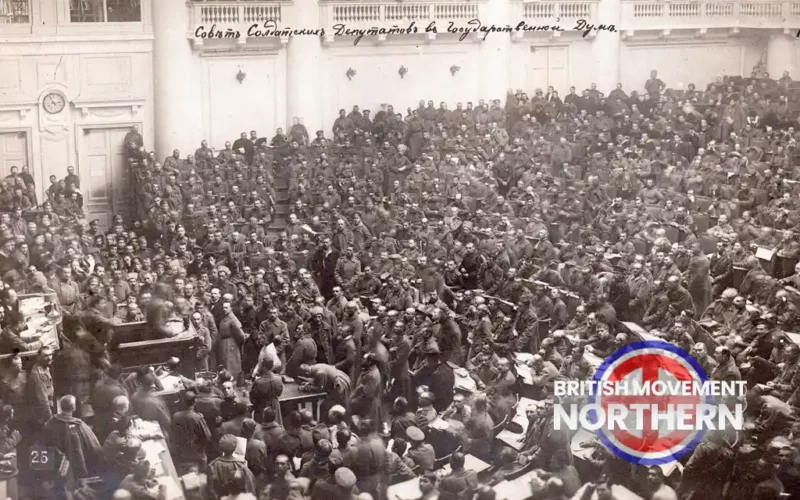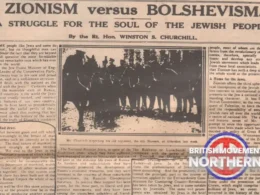An article by council insider and Nationalist contributor ‘Frustrated’.
On the 13th March 1881, Tsar Alexander II of Russia was blown up in a Saint Petersburg street by members of the revolutionary socialist group ‘Peoples’ Will’, which sought to overthrow the Tsar by murdering him and officials in his government.
Because ‘Peoples’ Will’ had many prominent Jewish members, their assassination of the popular Christian Tsar inspired many retaliatory pogroms by Christian Russians on Jewish communities, in which thousands of Jewish homes were destroyed, and hundreds of Jews were injured or killed.
In response to his father’s murder, the new Tsar Alexander III, gave up trying to assimilate his routinely revolutionist Jewish subjects that lived within his vast empire. So Alexander III enacted the anti-Jewish ‘May Laws’ on 15th May 1882 restricting the Jews to live in their isolated ghettos.
So, many Jews fled the restrictions in Tsarist Russia for new lives in France, Britain and the USA. Their plight inspired their fellow Jews in America to establish, ‘The Hebrew Immigrant Aid Society’ (HIAS) in New York on November 27th, 1881, to help beleaguered Jews in Russia to migrate to America.
From 1881 to 1917, HIAS was involved in helping about two million Jews flee persecution in Russia for a new life in the USA. Many of these Jewish emigrants from Tsarist Russia were radical Marxist dissidents that hated the Tsar, and harboured feelings of revenge against him and his government. Leon Trotsky was one of these radical Jewish exiles that lived in New York in early 1917. The New York banker Jacob Schiff also hated Tsarist Russia for the way it had repressed his fellow Jews.
In 1917, Jacob Schiff’s Kuhn, Loeb & Company bank and other Wall Street firms funded Trotsky and an army of these Jewish exiles to return to Russia to seize power through a communist revolution. They knew this would then win them lucrative mineral rights from Russia’s new Bolshevik regime!
After the Bolshevik revolution in late 1917, the American ambassador to Russia, David R Francis, sent a despatch to Washington in January 1918 indicating that this “Jew Coup” had been executed. His despatch stated that; “The Bolshevik leaders here, most of whom are Jews and 90% of whom are returned exiles, care little for Russia or any other country but are internationalists and they are trying to start a worldwide social revolution.”
Reverend George A Simons was supervisor of the Methodist Episcopal Church in Petrograd, (formerly St. Petersburg), from 1907 to 1918. In 1919, Simons appeared before the US Senate’s Overman Committee which was investigating Bolshevik subversion in the USA. He testified on recent events that he had witnessed in Petrograd. Simons stressed how outside Jewish agitators swarmed into Petrograd from the Lower East Side of New York after the removal of restrictions on Jews entering Petrograd by the short-lived Kerensky government, after the abdication of Tsar Nicholas II in March 1917.
Simons further testified that in late 1918, only 16 out of 388 members of the Soviet government then sitting in Petrograd were real ethnic Russians. All the rest were Jews and 265 of these Jewish members of the Soviet government had recently arrived from the Lower East Side of New York!
The staggering number of Jews in the early Communist government in Russia and the worldwide Communist movement was highlighted at the time by Winston Churchill in his 1920 newspaper article in the ‘Illustrated Sunday Herald’ titled; “Zionism versus Bolshevism, a struggle for the soul of the Jewish people.”
Churchill’s article can be read on the internet and its revelations are still shocking! In the February 3rd, 1949 issue of the ‘New York Journal American’, Jacob Schiff’s grandson, John Schiff, was quoted by columnist Cholly Knickerbocker as saying that his grandfather had given about $20 million for the triumph of Communism in Russia and that there were also strong financial incentives for Wall Street banking firms, such as Jacob Schiff’s, Loeb and Company, to see the old regime fall into the hands of revolutionaries, who would grant future lucrative business concessions in return for financial support today. So was this truly a workers’ ‘Russian’ revolution?
Credits:
Top Image: The Petrograd Soviet Assembly meeting in 1917. User Kristallstadt on en.wikipedia, Public domain, via Wikimedia Commons.
The British Movement welcomes articles for possible inclusion on this site from members and supporters across the North of England. Please remember that we have to operate within the laws of this country; we will not include any content that is against the current laws of the United Kingdom. News reports should be topical and relevant to the regions covered by this website.












